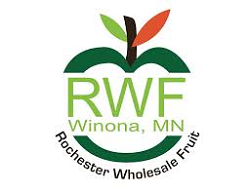While still relished as side dishes and pizza toppings, mushrooms are stepping even further into the spotlight with a powerful combination of nutrition, flavor and versatility.
Growers, suppliers and retailers are creating campaigns that appeal to today’s health-conscious, plant-forward consumer; whether it’s promoting emerging varieties or leveraging influencer partnerships and functional food trends, the mushroom category continues to grow in more ways than one.
Changes in Consumer Perception
Consumer perception of mushrooms has hit a turning point, says Kelsey Coon, sales and marketing manager for Highline Mushrooms.
“Once considered a side ingredient, mushrooms are now recognized as a functional food, a plant-based staple and a fresh produce powerhouse,” Coon says. “Today’s shopper is informed, visual and values both nutrition and transparency — and they expect more from the mushroom aisle.”
Highline has also built a full ecosystem around its consumer: a new website, social campaigns, influencer content and retailer-ready digital assets that help get mushrooms in the cart more often, Coon says.
Amy Wood, president of the Mushroom Council, says consumer interest in mushrooms continues to grow, especially around their emerging cognitive health benefits.
“The Mushroom Council is building a new campaign that introduces younger consumers to mushrooms in an engaging way, connecting the dots between brain health, bold flavor and modern food culture,” Wood says. “You’ll also see us amplifying partnerships with influencers and content creators who can speak about mushrooms in fun, credible ways that resonate with today’s shoppers.”
Though interest in mushrooms remains strong, J-M Farms has noticed a slight dip in overall sales.
“That said, one trend that really stands out is a growing demand for larger pack sizes,” says McKinzie Koons, marketing and sales manager for J-M Farms. “It seems like shoppers are looking for better value and are using mushrooms more regularly in their cooking or wellness routines. We’re leaning into that by adjusting our product lineup and messaging to focus more on value, convenience and everyday use. The goal is to make mushrooms feel less like a specialty item and more like a kitchen staple.”
Consumer perception is complicated and is determined by a few factors, says Justin McLean, sales manager for Farmers Fresh.
“On one hand, mushroom consumption as a whole has declined since COVID, with rising overall food costs really impacting consumer purchasing. However, I believe over the last year we are starting to see that trend turn around with increased awareness of benefits from mushrooms, rising social media trends focusing on clean eating, dietary trend now as well with Ozempic needing high-protein and high-fiber diets, etc.,” McLean says. “Additionally, we as an industry are pushing for more awareness with consumers through social media partnerships and partnerships in the food service sector to have mushrooms moved more to center-of-plate.
The beginning of the year as a whole was slower than expected, but it wasn’t only for mushrooms, says McLean, adding that the broader impact was caused by concerns with tariffs and the subsequent fallout.
“Politics aside, consumer confidence and the uncertainty of everything are really affecting consumer purchasing habits in all areas. Tourism is down, people are making tighter decisions on their overall spending, etc.,” McLean says. “With the start of summer now and the “tariff situation” for North American trade somewhat sorted, it seems things have started to pick up again for some segments; retail and foodservice, however, some geographic areas are still not seeing the bounce back (like Las Vegas).”
Emerging Trends
Coon says demand for organic mushrooms is booming, especially in the Plains and Midwest, and the company is seeing a surge in interest for crimini mushrooms as home cooks get more adventurous and nutrition-conscious.
“Perhaps one of the biggest emerging trends is the intersection of mushrooms and GLP-1 medications like Ozempic,” Coon says. “As millions of consumers shift their eating habits toward low-calorie, nutrient-dense foods, mushrooms are uniquely positioned to deliver. We’re launching a dedicated campaign: ‘Highline Mushrooms: Your GLP-1 Sidekick’ to spotlight mushrooms as the perfect food ally. The campaign includes a digital landing page, recipe content, blogs, influencer partnerships and turnkey POS kits for retailers to bring it to life in-store.”
Wood says the Mushroom Council is seeing a growing population of consumers who are reaching for mushrooms to plus-up their convenient everyday meals.
“They’re making a simple mushroom sauté and adding it to instant ramen, frozen pizza and more. This ‘homemade-ish’ approach is popular among younger consumers who are more likely to assemble meals than cook from scratch,” Wood says. “The Mushroom Council will be tapping the power of influencers and social media to help provide more meal assembly inspiration where mushrooms can shine.”
Shoppers are growing a special appreciation for the brain health and cognitive benefits of consuming mushrooms, she adds.
“One way the Mushroom Council is fueling this momentum is by raising awareness about their prominent role in the MIND Diet, a hybrid of the Mediterranean Diet and DASH (Dietary Approaches to Stop Hypertension) diets,” Wood says. “It is an eating pattern that focuses specifically on promoting brain health and reducing the risk of age-related cognitive decline.”
Mushrooms are naturally a go-to ingredient for plant-based eating and recognized for their position as one of the most sustainably produced foods, says Wood, adding that the Mushroom Council continues to promote mushrooms within these trends through influencer marketing, PR and social media.
Organic is having a moment, Koons says, and mushrooms are right in the mix.
“Lots of growers are making the shift to fully organic crops as consumers look for ‘cleaner,’ more natural options,” Koons says. “People want to know where their food comes from, how it’s grown and what goes into it. The industry has always done a great job of being transparent about the ingredients/process, but labeling products organic adds to that.”
McLean says Farmers Fresh is seeing white and brown, whole and sliced in 8-ounce still in the top spots for all mushroom retail sales, but from a foodservice perspective, “we are seeing more interest in exotic and specialty mushrooms as restaurants are pushing for more unique and elevated dining experiences for their guests.”
What’s New
This year has been transformational for Highline Mushrooms.
“We overhauled our packaging to use clear, recyclable rPET tills across the board — giving consumers total confidence in freshness and quality,” Coon says. “We also introduced bold, color-coded label designs that use proven psychology to boost visual impact and guide shopper decisions.”
But innovation didn’t stop at packaging, Coon says. “We’ve also introduced campaign-ready POS kits that give our retail partners everything they need to execute in-store. Whether it’s National Mushroom Month, grilling season or GLP-1 education, we deliver shelf-ready displays, signage and cross-promotional materials to create impact at every touchpoint.”
Behind the scenes, Coon says Highline has invested in automation and Dutch-style growing technology, with construction underway on its organic-certified farm of the future.
“It’s a full-circle innovation story — from farm to shelf,” Coon says.
J-M Farms is seeing a big push toward ready-made or easy-to-assemble side dishes.
“This summer, the focus has really been on grill packs,” Koons says. “Consumers want convenience, and prepped mushroom sides and grill packs make an easy addition to dinner without all the prep work.”
Koons add that the Mushroom Council has done a great job of promoting the health and sustainability benefits of mushrooms for years.
“One big push for the wellness/plant-based trend has been ‘The Blend,’ which encourages consumers to blend portions of mushrooms with the protein of their choice,” Koons says. “Typically, 30/70 or 40/60, but really, it’s all about preference. This cuts cost, cuts calories, stretches meals further and incorporates additional nutrition into meals.”
J-M says it has the unique advantage of being right in the heart of things.
“Most mushrooms in the U.S. come from Pennsylvania, so we love reminding our customers that we’re the local option here. We’re proud to be part of the Made in Oklahoma Coalition and work hard to keep J-M a name people know and trust. Being local isn’t just about location, it’s also about community, and over the last 45 years, we’ve built a pretty special one,” Koons says.
Farmers Fresh has expanded its packaging options for customers looking for clear plastic trays over the more traditional black, in addition to its more recyclable and sustainable options like paper/cardboard trays. McLean says it’s also expanding into the top-seal format offerings.
“For us, the ‘What’s New’ is the exciting times we are in as an industry, as noted with the decline over the years in consumption, this year marks an initiative to drive consumers to increase buying of mushrooms as an industry together. All growers are collectively trying to push the idea of more mushrooms, while striving to produce a better product for the end consumer,” McLean says. “With retail chains reducing labor, product is sitting on shelves longer and not being rotated as much as it should be, so we as an industry have to strive for a better quality, fresher longer longer-lasting item that will still look good on the shelf for the end consumer.”



















